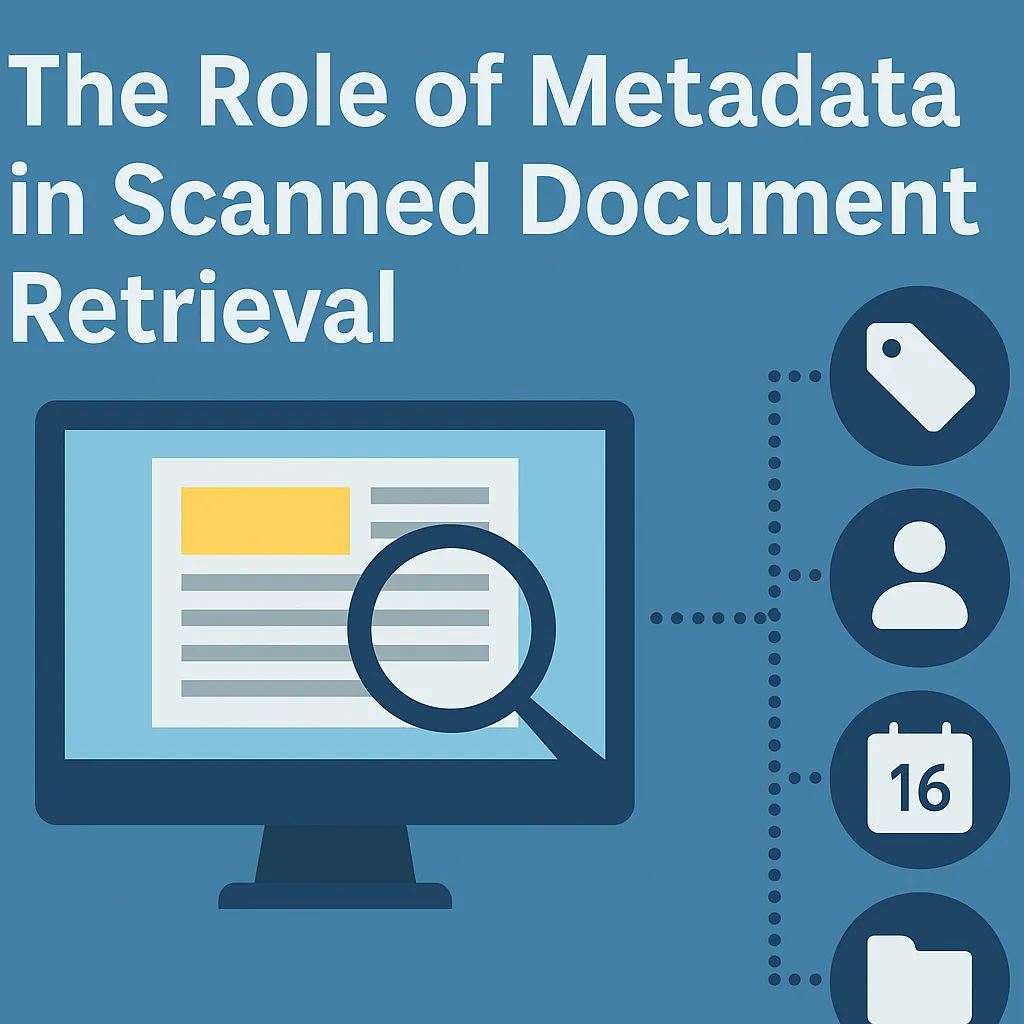
The Role of Metadata in Scanned Document Retrieval
By: USA IMAGING, Inc.
When it comes to document scanning, most people focus on file quality and format—but one of the most powerful tools for organizing and retrieving scanned files is often overlooked: metadata.
In the digital world, metadata is like a filing assistant that works 24/7, helping you find the right file, faster and more reliably. Whether you're managing legal documents, financial records, healthcare files, or engineering drawings, embedding metadata into your scanning workflow can dramatically improve efficiency and compliance.
What Is Metadata?
Metadata is information about a file—not the content itself, but details about that content. For scanned documents, metadata might include:
Document title or description
Author or originating department
Creation or scan date
Client or case number
Tags or keywords (e.g., “Invoice,” “Contract,” “Year-End Report”)
Confidentiality level or security classification
This data is embedded into or associated with the file, making it searchable and sortable within document management systems.
Why Metadata Matters
1. Enhanced Searchability
With metadata in place, users can locate documents by keyword, date, author, or category—even if they don’t remember the exact file name. It transforms chaotic folders into structured databases.
2. Smarter Categorization
Files can be automatically grouped by project, department, or type. Instead of dumping all scanned documents into a single folder, metadata allows systems to sort and organize files dynamically.
3. Regulatory Compliance
Certain industries require specific data points to be tracked with every file (e.g., legal case numbers, patient IDs, invoice dates). Metadata ensures these details are recorded and retrievable—supporting compliance audits and recordkeeping mandates.
4. Version Control
Metadata can indicate the latest revision date, author, or approval status, helping teams avoid working with outdated or incorrect versions.
Real-World Example
A law firm scans hundreds of case documents per week. Without metadata, their team might waste hours opening files one by one to locate a specific deposition. But with metadata fields like client name, case number, and document type, they can filter their search in seconds—and retrieve the exact file without error.
Best Practices for Adding Metadata
Define a consistent metadata structure for all scanned files
Automate metadata entry using barcodes, indexing software, or OCR
Use dropdowns or templates to avoid entry errors
Include only relevant fields to avoid overcomplicating the system
Partner with a scanning provider who offers custom indexing and metadata tagging services
Conclusion
Metadata doesn’t just support your documents—it supercharges them. It transforms scanned files into intelligent, retrievable digital assets that support productivity, compliance, and long-term data management.
Need Help Building a Metadata Strategy?
At USA Imaging, Inc., we help organizations go beyond basic scanning by embedding smart metadata that powers better retrieval and filing systems. Contact us to discuss a custom solution that fits your workflow.
